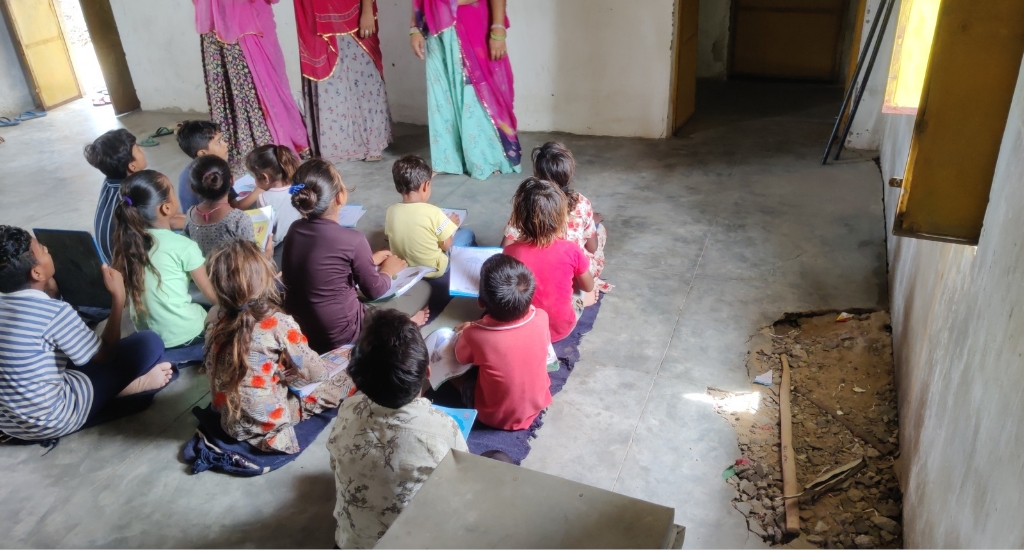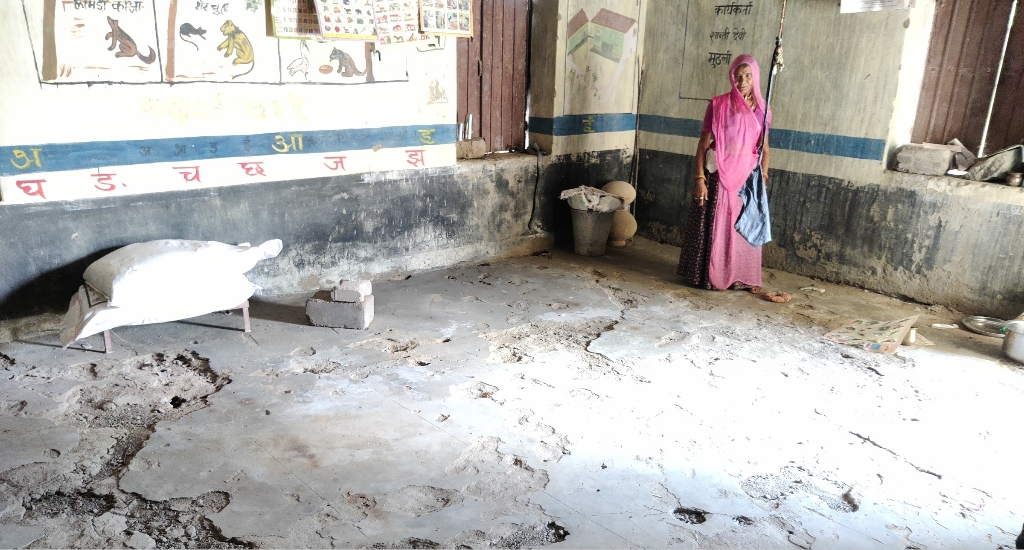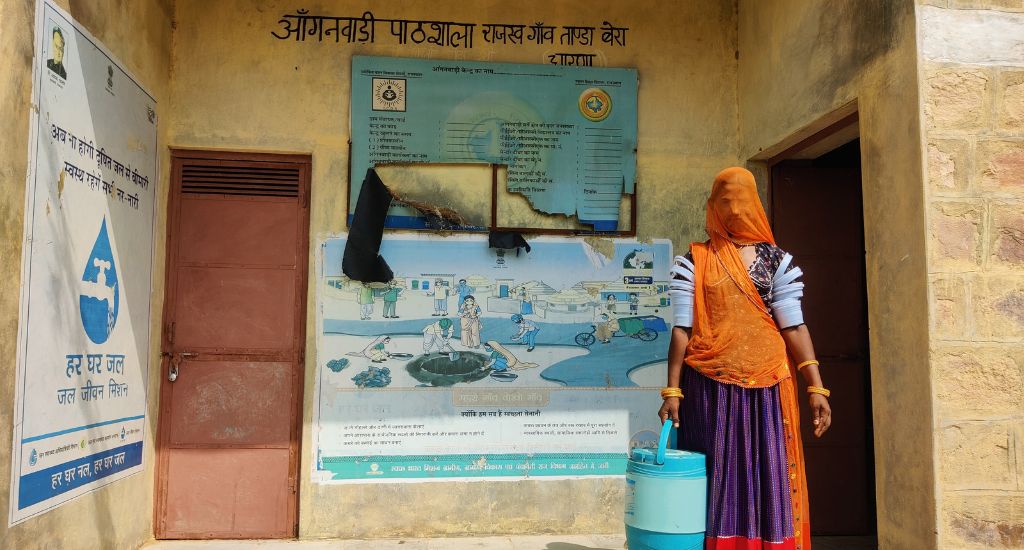
Poor facilities plague Rajasthan’s anganwadis
With dilapidated buildings that often do not have basic facilities such as water and electricity, the anganwadis in Rajasthan are not able to fully ensure the development of children.

With dilapidated buildings that often do not have basic facilities such as water and electricity, the anganwadis in Rajasthan are not able to fully ensure the development of children.
Anganwadi centres are an important part of the Integrated Child Development Services (ICDS) programme, instituted to provide holistic development and care to children below the age of six as well as pregnant women.
They provide a range of services including nutrition, health check-ups and immunisations for pre-school education. They also play an important role in promoting early childhood development and addressing malnutrition.

But in some districts of western Rajasthan – Barmer in particular – the condition of the anganwadi centres envisioned as sanctuaries for the care and holistic development of children and pregnant women is poor, with the set-ups lacking basic amenities.
For the financial year 2023-24, the central government allocated Rs 20,554 crore for Saksham Anganwadi Centre and Nutrition 2.0 – a centrally sponsored scheme implemented by the states. It also allocated Rs 1,472 crore for Mission Vatsalya or Child Protection Services and Child Welfare Services, and Rs 3,143 crore for Mission Shakti or Mission for Protection and Empowerment.

The budget figures may sound impressive – though the Mission Shakti budget is slightly less than last year’s allocation – on the ground, there is nothing to show for these funds.
Many anganwadis in Rajasthan are dilapidated. In some centres the cement floors have caved in, leaving large gaping holes. In some others, the plaster on the walls has spalled and large cracks are visible on the walls.
In the anganwadi at Muthali village of Barmer district, insects keep crawling out of the broken floor, leading to a situation where the children cannot sit inside the building. The anganwadi workers said that snakes and scorpions have been spotted in summer. Though they informed the officials, no action has been taken yet.
Also Read: How pregnancies are getting healthier in rural Rajasthan

In some centres, because of cracked ceilings, water drips during the rainy season, making it difficult for the children to sit inside. Such poor condition of the buildings and the broken furniture seen in many anganwadis pose a threat to the safety of the children.
Indira Jingar, an anganwadi worker, comes to the centre at 8 am with two fellow workers and leaves at noon. In these four hours, they attend to the children and pregnant women, despite lack of basic facilities.
Some centres in remote areas have no or limited access to clean water, forcing the anganwadi workers to fetch water from a distance. Many buildings do not have toilets, forcing the children to relieve themselves in the open. Because of this, many pregnant women do not visit the anganwadi for their pre-natal check-up and necessary medicine and dietary advice.
“Even women have no option but to relieve themselves in the open sometimes,” said Kamla Devi, an anganwadi worker at Majiwala village in Balotra administrative block. “There is also no place where women who come for ante-natal check-up can feed their babies.”
Here too, the anganwadi workers have informed the officials, but nothing has been done yet.

At an anganwadi in Dharna, a small village in Barmer district, four-year-old Gopal said that he and other children remain drenched in sweat the entire time they are at the centre. Chandu Devi, the anganwadi worker, added that they get no electricity.
Many anganwadis have no or improper storage facilities due to which they cannot keep the health and nutrition products to be distributed to children and women. They also do not stock the sanitary napkins which women in the age group of 11-45 years can collect free of charge.
Bhimaram Barupal, a child development project officer in the area, said that there are 280 anganwadis in two blocks, out of which a few don’t have educated workers currently. “We are trying to recruit them,” he said, adding that panchayat sarpanches should take care of the anganwadis. “We are doing all the work according to the official guidelines,” he said.
Also Read: Perils of anganwadi worker not showing up for work

However the poor condition of these centres continues to hinder the effective delivery of services, affecting the overall development and well-being of children in Barmer district.
The lead image at the top shows an anganwadi in Barmer district with broken flooring that harbours insects (Photo by Salim Attar)
Salim Attar is a journalist based at Barmer, Rajasthan.